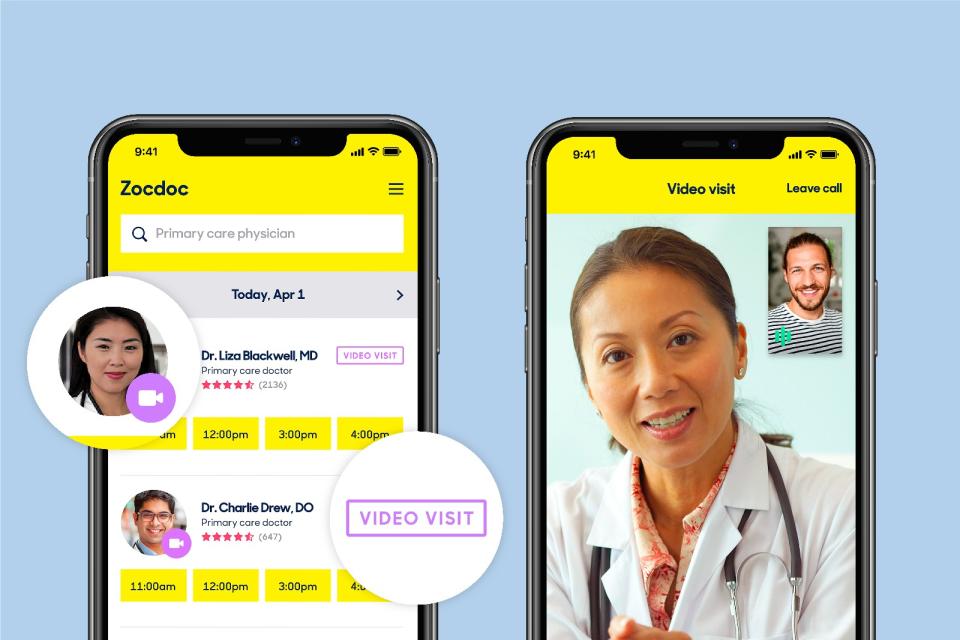Zocdoc becomes a telehealth facilitator with new video service
The healthcare listings site will also facilitate the video calls.
Zocdoc, the popular online directory of healthcare providers, is eyeing a new role. With the rise of telehealth services in the wake of the global pandemic, the company is launching a new tool that will see it play a more active part in connecting patients to doctors. It’s partnering with communications platform Twilio to launch Zocdoc Video Service (ZVS), a HIPAA-compliant telehealth video solution that will be free to use not just for consumers, but for doctors too. And that’s not just a special introductory deal or temporary offer during the pandemic, either. You’ll still have to pay your medical bills, obviously, but at least practitioners won’t have to pay to securely connect with patients.
Before the coronavirus outbreak, telehealth was an uncommon service. Not many people even knew they could see a doctor over the internet, let alone actually use these online services. But as people started looking for ways to get their worrying symptoms assessed by a professional (rather than just Googling your symptoms or checking WebMD) from the safety of their own home, telehealth saw its popularity skyrocket.
Zocdoc’s founder and CEO Oliver Kharraz told Engadget that video visits now account for 30 to 40 percent of overall bookings, up from “essentially zero at the beginning of March.” The site now has more than a million virtual appointments available across 100 specialties -- and that’s practitioners using third-party tools before the company even launched its video service. Doctors are looking for ways to connect with patients securely and digitally, and Zocdoc wants to help facilitate that without requiring users to set up a separate app or device.

Before today’s launch, Zocdoc’s main function was as a directory. You could go to the site and look specifically for doctors that offer virtual visits (regardless of the video service they use) using a filter the company announced last month. In the results, you’ll see a purple camera icon that indicates a provider offers video services. After you’ve picked a doctor, you can schedule an appointment on their Zocdoc profile, and it’d be up to them to decide what platform to conduct your meeting.
With Zocdoc Video Service, doctors are still free to choose whatever channel they want to use for your visit. But for providers who might have previously been skirting regulations by using free tools like Skype or FaceTime, ZVS is a compelling alternative. Doctors just need to sign up and they’ll be able to host virtual examinations for free. If they have profiles on Zocdoc, the scheduling integration is more seamless, but those who aren’t on the directory can still use the video service for free.
Whether you found your doctor on Zocdoc or elsewhere, here’s how you’ll experience ZVS: Your doctor will send you a unique link to their virtual waiting room, which you can click when it’s time for your appointment. When the provider is ready, they’ll start your visit, and you’ll see the typical permission requests for access to your camera and microphone. You won’t need a specific app, device or Zocdoc account to use this.

For those of us who have already used telehealth services, this is a familiar process. Doxy.me is a popular provider in the space, and similarly doesn’t require you set up a separate app or account. It also uses a unique link and virtual waiting room. While Doxy.me also offers free services to doctors, it has a comprehensive set of premium features like screenshare, group calls and notifications that require a $35 to $50 monthly fee. Meanwhile, Zocdoc says all its features will be available at no cost, and the product is meant to be free for everyone -- it’s not a limited time offer or special for the pandemic.
While telehealth may be becoming a bigger part of our healthcare infrastructure, there are still plenty of challenges in the way. Not everyone has access to the internet or a computer, and protecting patient information will be an ongoing priority. Insurance providers also have to offer coverage for virtual visits. But as we contemplate our new normal after the pandemic, building capable, accessible telehealth platforms seems an important step forward.
